
Build your functional strength as you age and perform daily tasks with ease with this 10-minute dumbbell workout.
Staying independent and mobile as you age comes down to having good functional strength. Functional strength isn’t just about lifting heavy objects or building muscle mass. It’s about the ability to carry on daily repetitive movements like walking, getting up, and sitting down.
The older you become, the more you need this basic functional strength to carry on the daily tasks with ease.
Luckily, functional training can be done at home and all you need is a pair of good-old dumbbells.
Dumbbells are in fact one of the best tools you can use for functional training. They allow you to apply resistance to almost all movement-based exercises that are at the core of functional training.
Not only that, exercises that fit this form of training are considered compound exercises that target more than one muscle group at a time. They not only train your body to work as a unit but also bring incredible efficiency and effectiveness to your workouts.
While this 10-minute functional workout uses dumbbells, if you are new to fitness, you can just use your body weight to start.
As you become more familiar with each exercise and movement, you can challenge yourself by adding dumbbells.
They are an excellent way to counter age-related muscle loss, build functional strength, and keep your body healthy as you age.
Each set takes approximately 10 minutes. As you progress, you can add a set or two to add challenges and bring more results.

You’ll also like:
Want to Age Well? Build Functional Strength in 20 Minutes With This 5-Move Dumbbell Workout
Dumbbell Front Squats
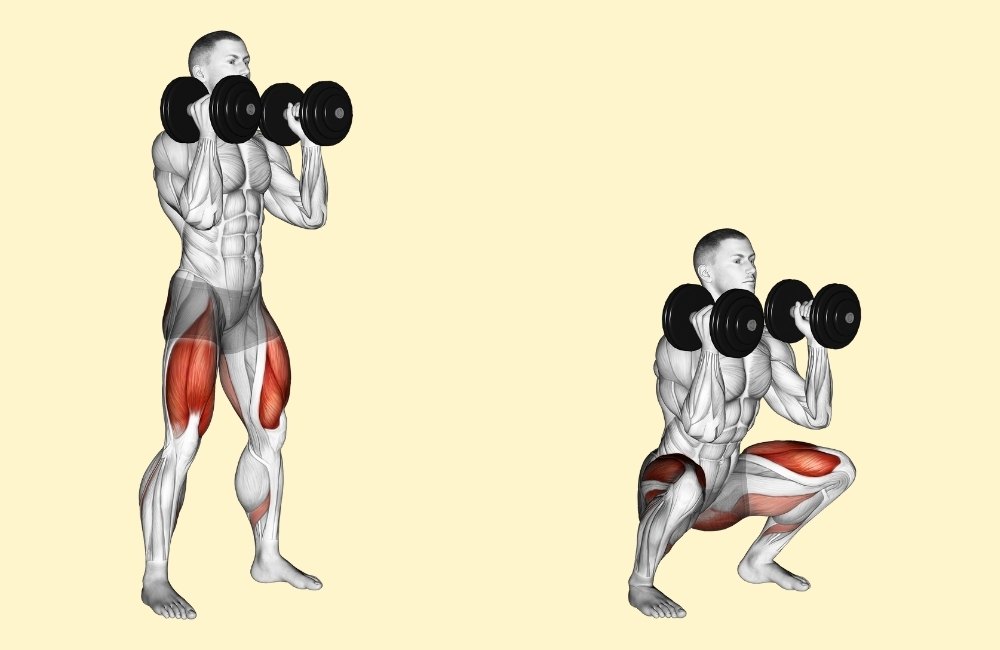
Squats are an amazing exercise that can help the body in myriad ways. The front squat variation also helps to incorporate some shoulder work, and the nature of this squat kicks your quads into overdrive.
How to Perform:
- Start standing, holding one dumbbell in each hand.
- Bend your elbows and place the dumbbells on the front of your shoulders, resting them there, if possible, with your hands supporting them.
- Squat down as deeply as you can without your back collapsing forward or your heels coming off of the ground.
- Once you’ve reached the bottom of your range, stand back up to complete the rep.
- Perform 10-15 reps for 3 sets per session, 2 sessions per week.
Dumbbell Bench Press
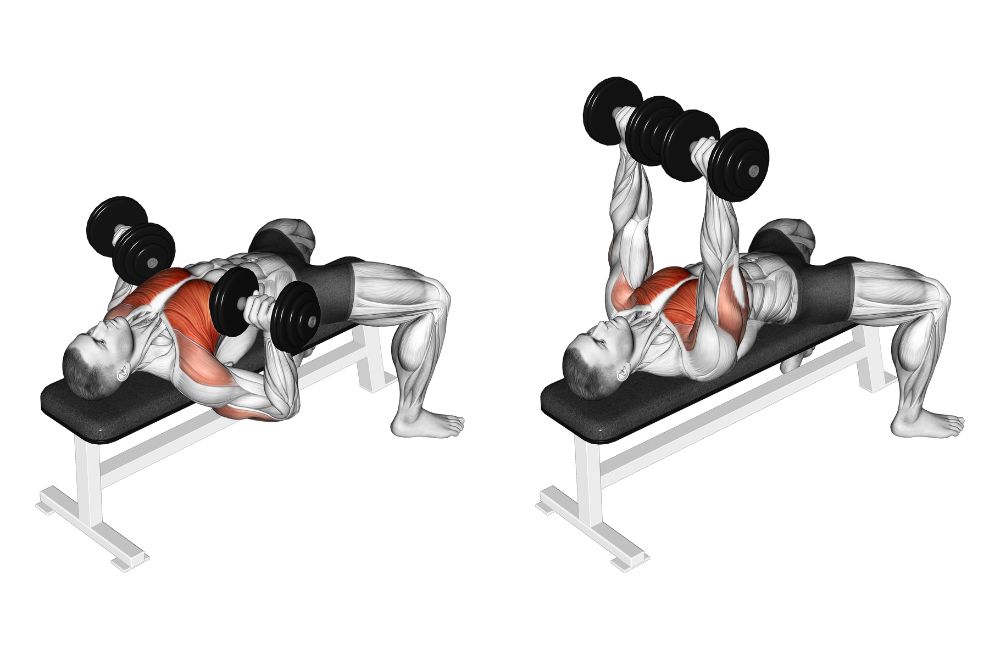
This exercise emphasizes the chest, triceps, and shoulders. If you have a bench, this will help you to achieve a greater range of motion and more muscle activation during this exercise. However, if you don’t have a bench available, lying on the floor works just fine.
How to Perform:
- Grab one dumbbell in each hand and sit down on your bench.
- Safely and carefully, transition into lying on your back with the weights on either side of your chest.
- Keeping your elbows tight, press the weights up towards the ceiling.
- Slowly, return the weights to the starting position to complete the rep.
- If you are new to this exercise, you should consider having a spotter with you while you perform the movement.
Dumbbell Pullover
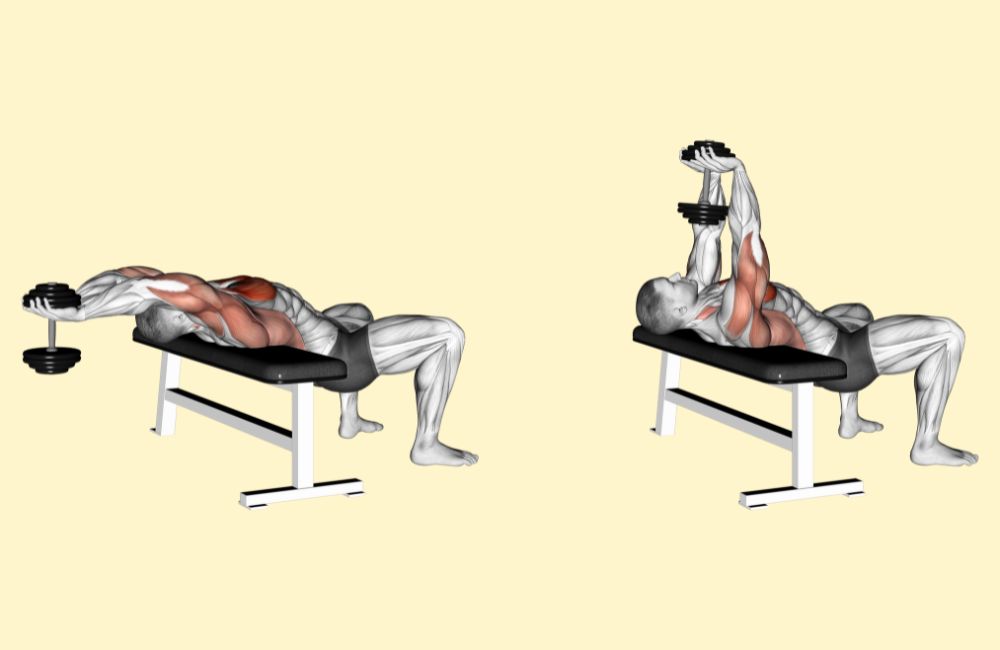
This move is great for the lats. In fact, this is one of the easiest ways to build up the lats when you can’t perform pullups.
How to Perform:
- Hold one dumbbell in both hands while lying flat on your back on a bench.
- Lift the weight over your head, allowing it to fall down toward the ground.
- Once you feel a stretch in your lats and pecs, reverse the motion and pull the weight back up to above your chest.
- Repeat this motion for 10-15 reps per set, 3 sets per session, and 2 sessions per week.
Dumbbell Bent-Over Row
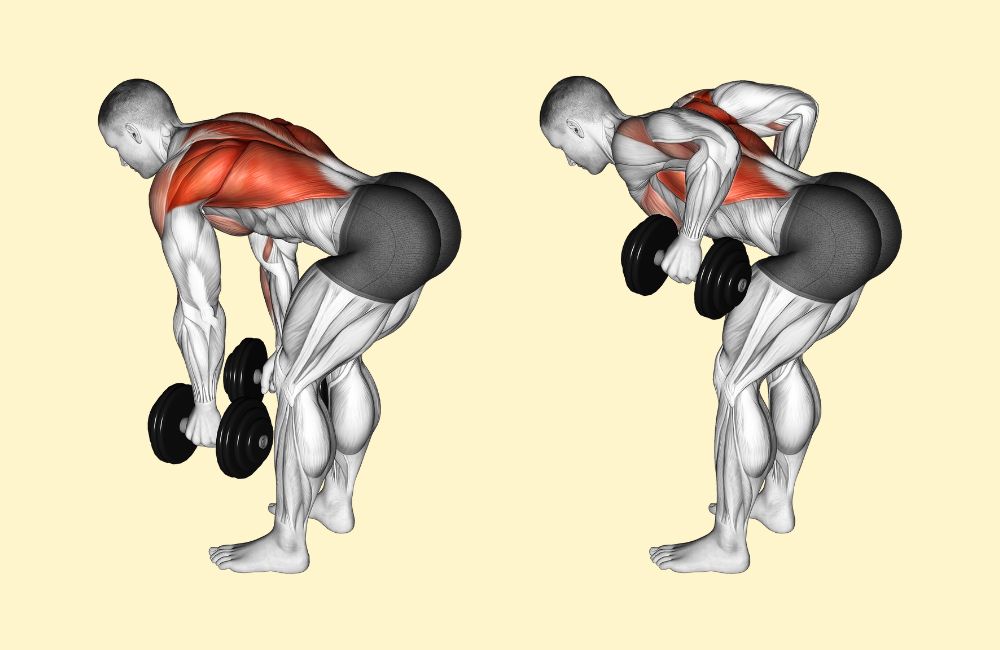
Rows are a foundational movement in resistance training. This exercise works the biceps and back to a high degree.
This option is a nice alternative to the previous exercise for those who find the other position too uncomfortable.
How to Perform:
- Start standing, with one dumbbell in each hand.
- Bend forward at your waist, keeping your back flat.
- Pull both weights up toward your chest by bending your elbows and pinching your shoulder blades together.
- Return the weights to the starting position to complete the rep.
- Perform 10-15 reps per set, 3 sets per session, and 2 sessions per week.
Dumbbell Windmills
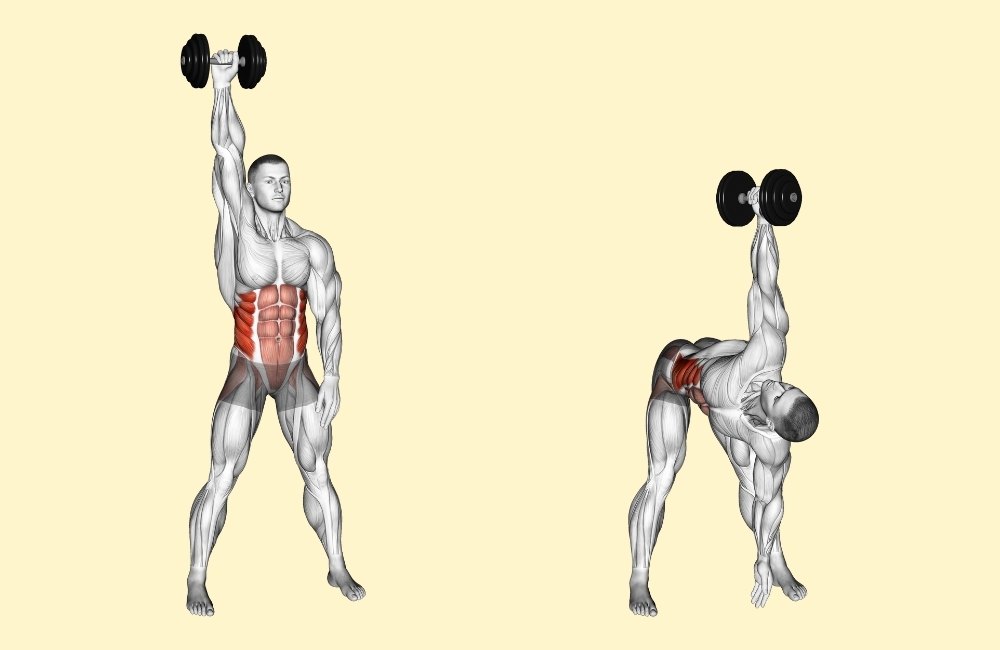
Be careful before you go full tilt on windmills. This exercise can put some serious strain on the low back, so make sure you are limbered up and loose before attempting this exercise.
How to Perform:
- Grab a dumbbell in your right hand. Push the weight up toward the ceiling, fully extending your right arm.
- Stand with your feet slightly wider than hip-width, knees slightly bent.
- Bend down toward your left side as you simultaneously twist slightly toward your right side.
- The weight should stay above your head, in your extended right arm the whole time.
- Then, return to the starting position to complete the rep.
- Complete 10-15 reps per side, per set, for 3 sets per session, 2 times per week.
Teapots
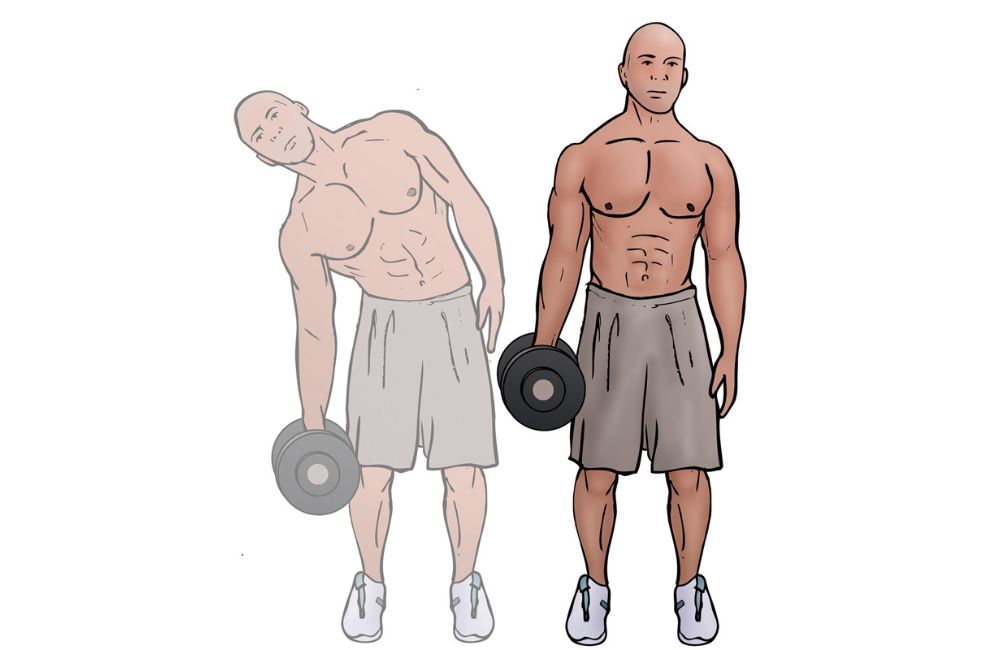
Teapots provide a great stimulus for increasing oblique strength. This move uses an asymmetric setup in order to increase the activation of your core muscles.
How to Perform:
- In standing, hold a weight in your right hand.
- Next, tip toward your right side.
- Then, stand back up straight by tightening your core muscles.
- Complete 10-12 reps per set for 3 sets per session.


